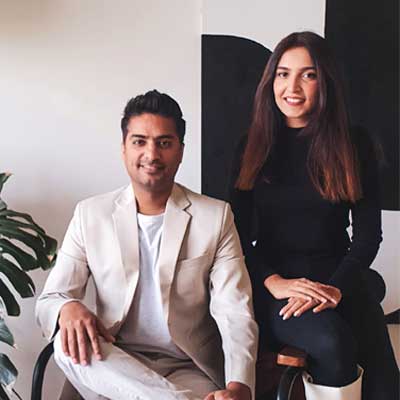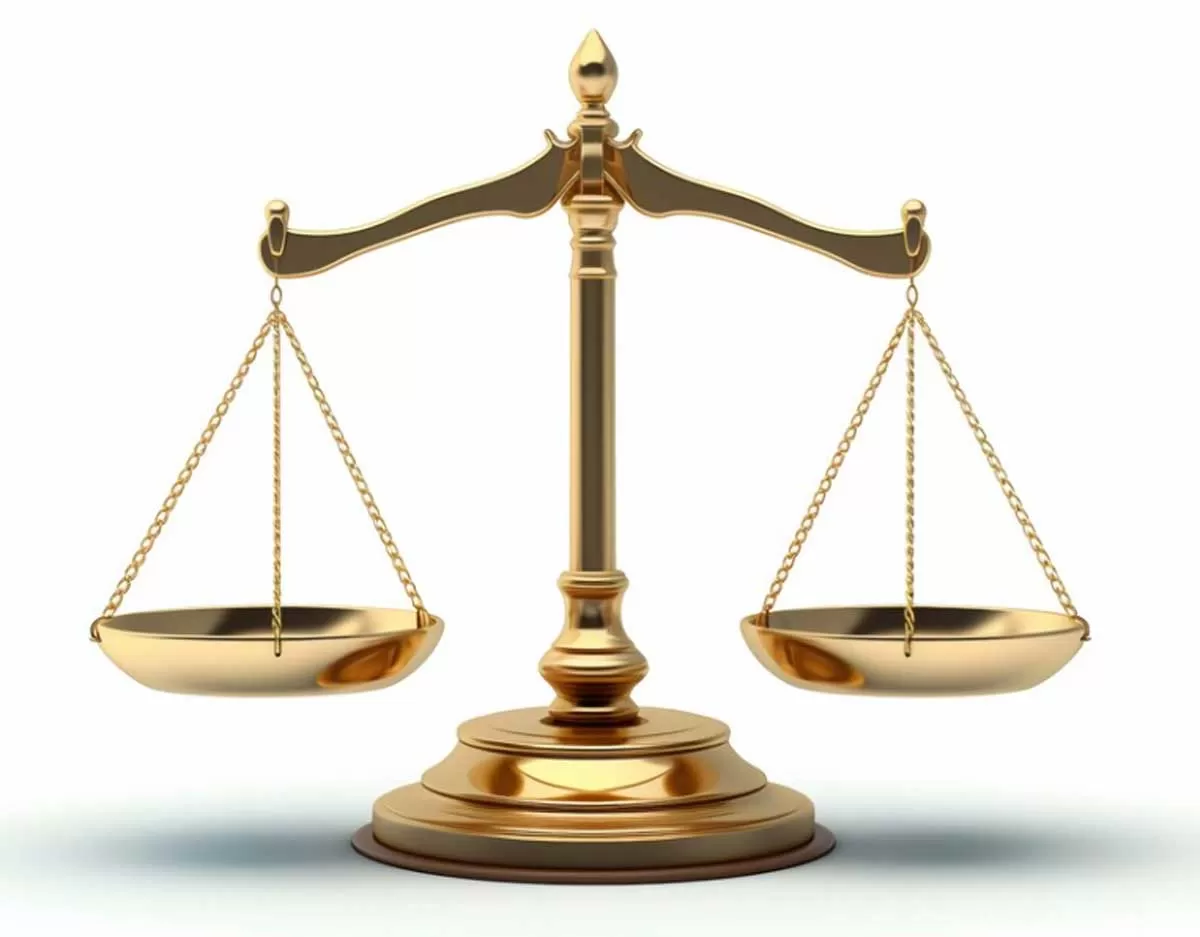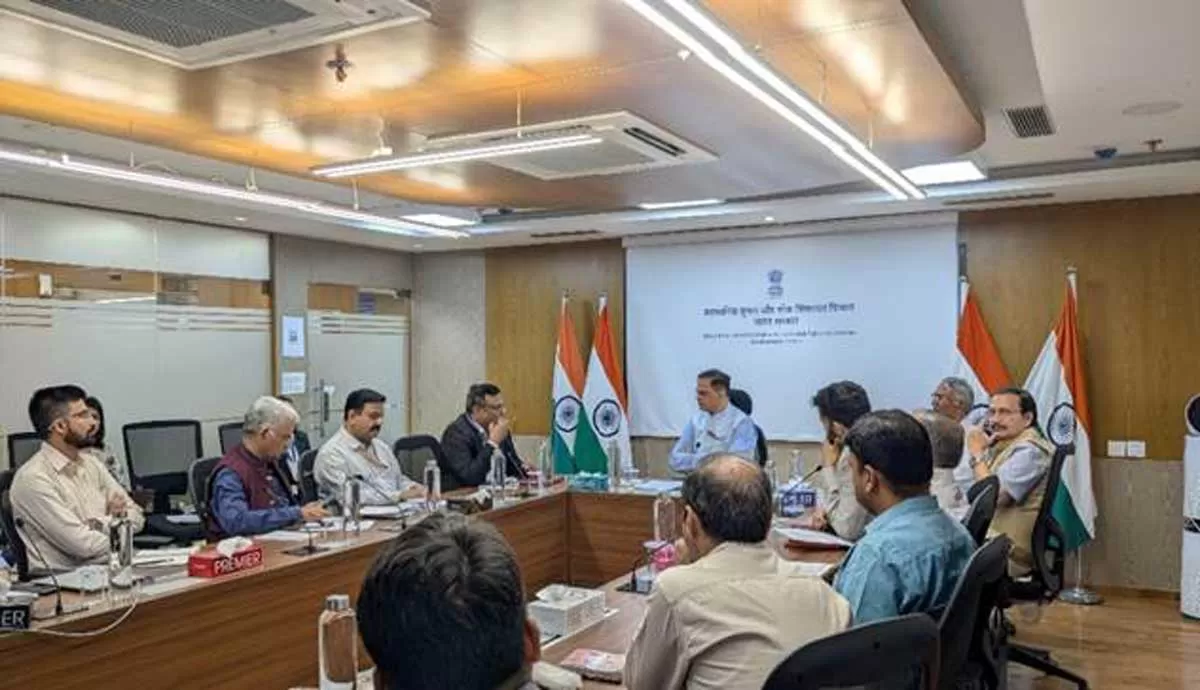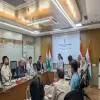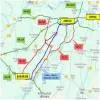CW Design Build speaks to Maha K and Vijay K, Principal Designers & Co-Founders of Design Doodle Studio about their design philosophy, colour palettes, furniture and a lot more.
Define your style of design ensuring that your projects bear your signature?
Our design style is an ever-evolving process that keeps developing and maturing with each project we work on. We don’t think it will ever stop evolving as we live in a world where the only constant is change. If we try to define our current style, we would say that it is fresh, it is subtle, it is minimal and uncluttered. We do like to have a fresh take on how spaces are planned, we try to make our spaces flow into each other by incorporating free flowing curves and fluidic lines wherever possible. We love doodling on our layouts and that really helps us achieve the spatial fluidity we aim at.
Although we like to keep experimenting, one thing we aim at, is for our spaces to be inspiring. We really enjoy designing zen spaces that exude soft minimalism and a charm owing to use of fresh colours and being interactive with nature. We are major plant lovers so we make sure every project incorporates lots of foliage along with tons of natural light. Infact our own living room is full of huge plants, some of them are even touching the ceiling. You can say we are kind of obsessed!
Take us through your design process from conception and design to final build.
We always start every design process by having an in-depth discussion with our clients to understand their needs. We encourage them to share details about the kind of lifestyle they lead, the spaces they spend more time in, and what kind of feelings and emotions they want their spaces to bring out. It is very crucial to understand the aspirations of your clients so that we as designers can get in sync with their vision and help them achieve a remarkable design which is as much their baby as it is ours.
We proceed to sit down on our drawing board (which is now an iPad) and sketch out countless layouts and design ideas taking into consideration various factors like climate, context, sun movement, seasonal changes, etc. We love doodling as a process to arrive at design ideas as it gives us the freedom to go beyond the ordinary and help us think out of the box. We always spend the maximum time at this stage to come up with creative solutions that find the perfect balance between the client's needs and an aesthetically pleasing design which is unique in itself.
After going through numerous stages of presentations and 3Ds with the client, we proceed to the technical part of the project, like working drawings, BOQs and various services. This is also the right time to bring onboard specialised consultants that take care of important aspects like structure, services, landscape, etc. It is a vigorous and time consuming exercise to coordinate with all stake holders and work out all intricate details that make a building functional and optimal.
Lastly, the most crucial aspect is to get a good contractor on board. It's safe to say that a contractor can make or break a project as everything depends on their potential and ability. If not executed well, even the best of designs go for a toss. We always advise our clients to go for experienced people and our role remains to oversee a project by doing regular site visits to ensure we see our projects come to life just like we had imagined them to.
What is the first thing that comes to your mind when you start creating your design?
We have a very distinct design 'approach' for every project we work on and that's very important to us. For us, more than aesthetics, a design should really make sense to the end user, functionality wise. How a space feels, the kind of emotion it evokes, how it interacts with people and connects with nature. This is the starting point for us, for any kind of design, even for interior projects. We like to look at a space freshly - we add, we subtract, we open up the space, remove all barriers, we carve out the space in our own way, we create a connect with the outdoors and nature, we bring in the maximum natural light. We make sure we tick all the basics, to make a space live able and delightful to be in, before getting on to the aesthetic part of it.
How important is the placement of the mirrors in a bedroom?
Placement of mirrors plays a very important role if you have a very tight space. With the right kind of placement and the right kind of light in the room, Mirrors can do wonders in giving the illusion of a much larger and airy space. However, people who believe in Vaastu do not recommend placing a mirror opposite the bed. But we don't like to restrict ourselves, we do whatever works for the design and makes sense in the overall picture
What is your opinion about multifunctional furniture trend that has been creating a buzz around?
Multifunctional furniture is definitely the next big thing. It is the need of the hour, especially in high density urban cities where everyone leads a very fast-paced life. They provide smart space-saving solutions while also providing value for money, which is a win-win. It also enables people to declutter their spaces by investing in very limited pieces of furniture that serve more than one purpose. However, we feel this concept has not been explored in the Indian market extensively. But we do see some brands coming up who offer such unique solutions and definitely feel that the younger population, who is more open to accepting new ideas, can start adopting these trends so that they no longer remain trends, but rather become the norm.
Tell us more about the color palette you usually work around more for your clients?
We decide on the colour palette of each project on the basis of a client's personality (if it's a home) or brand identity (if it's a commercial project). Some relate to bold colours, some prefer soft pastels while some have an inclination towards warm neutrals. However, few clients are gracious enough to give us complete freedom to do what we like, in those cases we like to experiment with fresh and soothing colour palettes like earthy tones of pastels, terracotta shades and creamy tones. Once in a while we also like to go crazy with an explosion of colour. It totally depends on what the design narrative is and what the project demands. We would like to keep evolving the color palettes we work with and try out new ideas. Afterall, what fun is life without some colour?
What are the key considerations while waterproofing a home?
Water proofing is a very important yet most neglected part of the construction process. Lack of knowledge and hesitation to bring in specialised agencies still leads to lot of problems related to water seepage and leakage. Major key consideration should be to first discuss with your architect and understand various types of water proofing methods/systems available in the market. One should take into account various factors like where and how it’s going to be installed, existing ground water levels, how the material is going to perform in the long run, impact of heat, rain, pressure and other climatic changes. Each area requires a specific type of water proofing solution and should always be taken up by a specialised consultant who has in-depth knowledge. We cannot stress on this enough.
How do you incorporate sustainability in your work?
When it comes to Architecture, we make sure to take into consideration the very basics of good design. Designing according to the sun orientation to reduce heat gains, ensuring maximum natural light inside the building to reduce the use of electricity, enabling natural ventilation to reduce dependency on air conditioning. And when it comes to choose of materials, we always prefer going for natural materials wherever possible like wood and stone which can be repolished and given a new life even after decades. Another consideration that we feel is very important, is to design spaces that are timeless, and flexible, and simple in nature, and also aim for longevity in the quality of materials, so that the end user does not feel the need to redo the space after every few years and the design keeps making sense to generations to come. This in itself is a very sustainable approach to design.
What are the key learnings you have gathered in your years of experience as an interior designer?
There have been too many learnings to list down here. Even after about 14 years of experience as a designer, we feel we still learn something new each day. So maybe that's the key learning, that learning never stops!
Another learning is to always lay more emphasis on functionality and the end user's needs and then add a creative soul to it, rather than going for aesthetics first. A successful design is the one that leaves the end user satisfied and happy.
Apart from that, it is also important to be true to your design language, be consistent and patient till you get the right kind of clients who resonate with your design aesthetic and make your life easier. It is important to work with people who think alike and align with a similar kind of vision as yourself.
Any message you would like to share with budding interior designers?
Well, firstly if you think this journey is going to be easy, then you better run in the other direction! But if you are persistent, creative, adaptive and are prepared to face all kind of challenges that come your way, there's nothing that can stop you from doing well as a designer. Our message to young designers would be to stick around, hone your skills, learn about entrepreneurship, plan your finances to sustain yourself for the first few months even if you don't have any projects in your bag. Another important thing is to market yourself and let people know about what you do as your initial business is only going to come from your social circle. Also, it's important to reach out to other designers around you for help and guidance if you feel stuck somewhere. We would be happy to help if someone approaches us for any kind of advice. Good luck!
